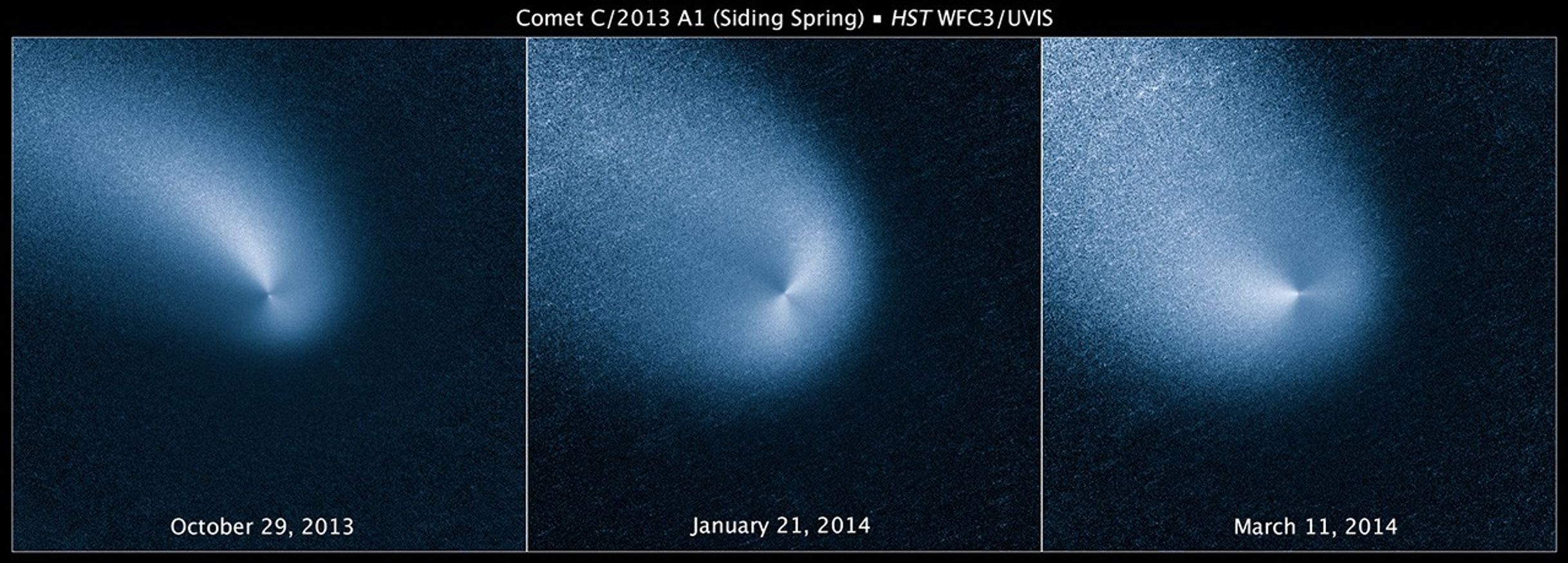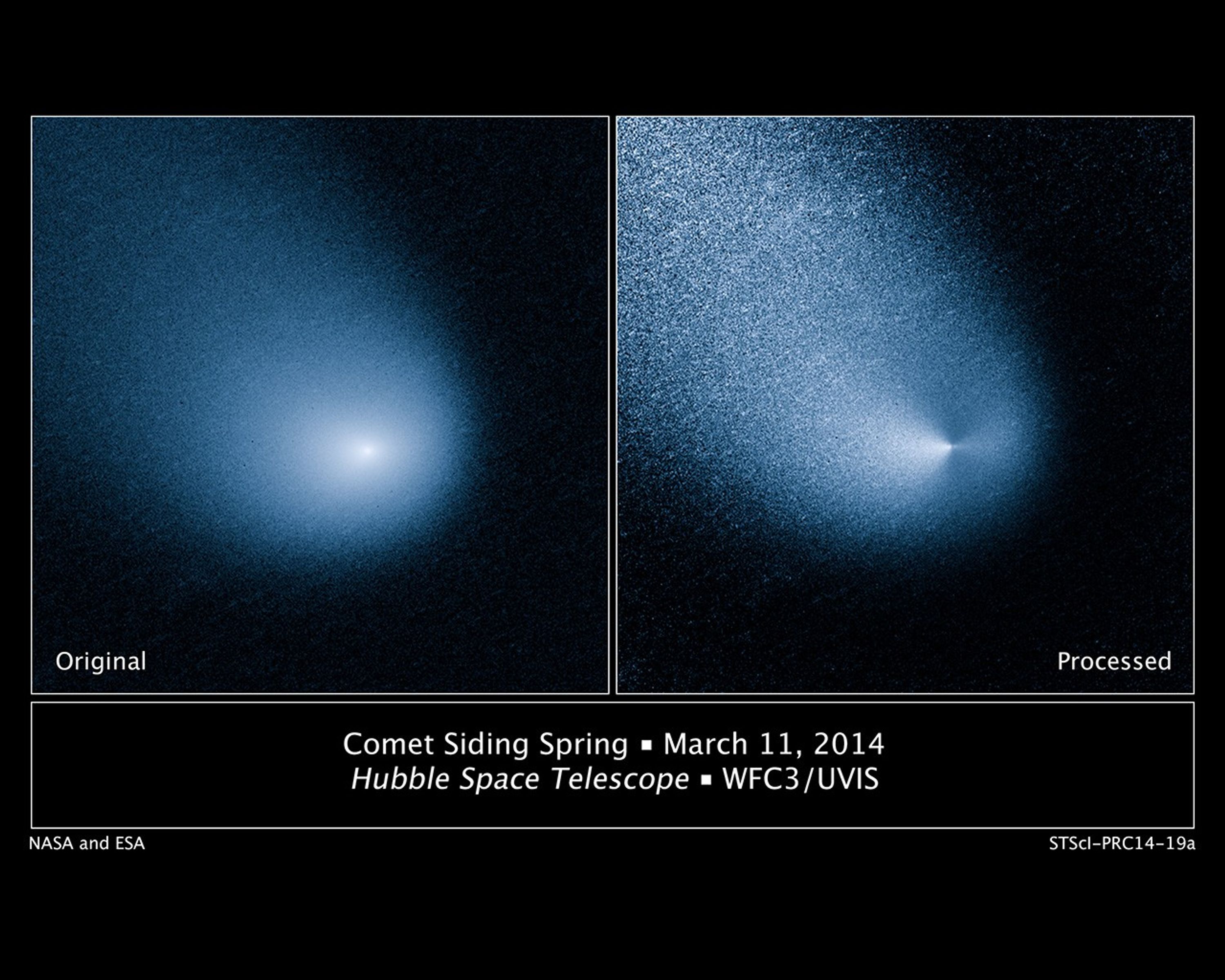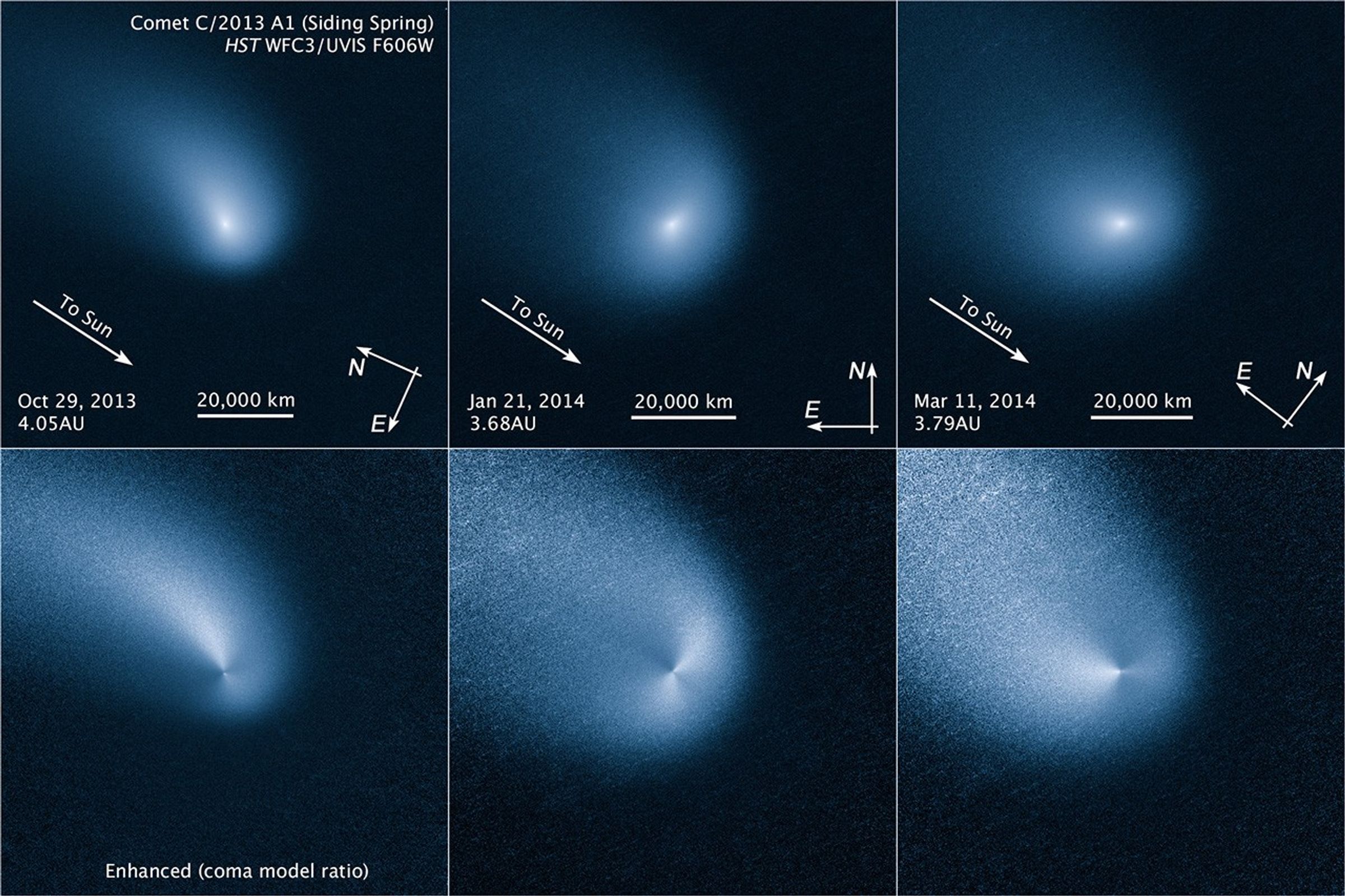1 min read
Hubble Tracks Inbound Comet

This is a series of Hubble Space Telescope pictures of comet C/2013 A1 Siding Spring as observed on Oct. 29, 2013; Jan. 21, 2014; and March 11, 2014. The distances from Earth were, respectively, 376 million miles, 343 million miles, and 353 million miles. The solid icy nucleus is too small to be resolved by Hubble, but it lies at the center of a dusty coma that is roughly 12,000 miles across in these images.
When the glow of the coma is subtracted through image processing, which incorporates a smooth model of the coma's light distribution, Hubble resolves what appear to be two jets of dust coming off the nucleus in opposite directions. The jets have persisted through the three Hubble visits, with their directions in the sky nearly unchanged. These visible-light images were taken with Hubble's Wide Field Camera 3.
About the Object
- DistanceDistanceThe physical distance from Earth to the astronomical object. Distances within our solar system are usually measured in Astronomical Units (AU). Distances between stars are usually measured in light-years. Interstellar distances can also be measured in parsecs.At the time of the Hubble observation on March 11, 2014, the comet was 3.28 astronomical units (305 million miles) from the Sun. The comet was 3.79 astronomical units (353 million miles) from Earth.
About the Data
- Data DescriptionData DescriptionProposal: A description of the observations, their scientific justification, and the links to the data available in the science archive.
Science Team: The astronomers who planned the observations and analyzed the data. "PI" refers to the Principal Investigator.The image was created from Hubble data from proposal 13610: J.-Y. Li (Planetary Science Institute), M. Kelley (University of Maryland), N. Samarasinha (Planetary Science Institute), C. Lisse (JHU/APL), T. Farnham and M. A'Hearn (University of Maryland), W. Delamere (Delamere Support Services), and M. Mutchler (STScI). - InstrumentInstrumentThe science instrument used to produce the data.HST>WFC3/UVIS
- Exposure DatesExposure DatesThe date(s) that the telescope made its observations and the total exposure time.Oct. 29, 2013; Jan. 21, 2014; and March 11, 2014
- FiltersFiltersThe camera filters that were used in the science observations.F606W (V)
- Object NameObject NameA name or catalog number that astronomers use to identify an astronomical object.C/2013 A1 Siding Spring
- Object DescriptionObject DescriptionThe type of astronomical object.Comet
- Release DateMarch 27, 2014
- Science ReleaseHubble Sees Mars-Bound Comet Sprout Multiple Jets
- Credit

Related Images & Videos

Hubble Sees Mars-Bound Comet Sprout Multiple Jets
[Left] This is a Hubble Space Telescope picture of comet C/2013 A1 Siding Spring as observed on March 11, 2014. At that time the comet was 353 million miles from Earth. The solid icy nucleus is too small to be resolved by Hubble, but it lies at the center of a dust cloud, called...
Share
Details
Claire Andreoli
NASA’s Goddard Space Flight Center
Greenbelt, Maryland
claire.andreoli@nasa.gov

































